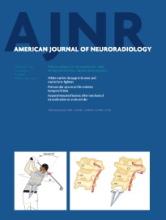Abstract
BACKGROUND AND PURPOSE: Stent-assisted coiling has expanded the treatment of intracranial aneurysms. With the use of continuously compiled data, we reviewed the role and drawbacks of stent-assisted coiling.
MATERIALS AND METHODS: We compiled data from consecutive patients from 2003–2012 who underwent coiling, with or without stent assistance. Clinical and angiographic results were analyzed retrospectively.
RESULTS: Of 1815 saccular aneurysms in 1505 patients, 323 (17.8%) were treated with stents (299 procedures) and 1492 (82.2%) without stents (1400 procedures). Procedure-related complications occurred in 9.4% with stents versus 5.6% without stents (P = .016, relative risk 1.5; 95% CI, 1.1–2.7). Ischemic complications were more frequent in the stent group than in the no-stent group (7.0% versus 3.5%; P = .005; relative risk, 1.7; 95% CI 1.2–2.5), as were hemorrhagic complications (2.3% versus 1.9%, P = .64). Procedure-induced mortality occurred in 2.7% (8/299) with stents versus 1.1% (15/1400) without stents (P = .029; relative risk, 2.0; 95% CI, 1.1–3.5). Logistic regression analysis identified wide-neck aneurysms as the most significant independent predictor of complications. A total of 64.1% (207/323) of aneurysms treated with stents and 70.3% (1049/1492) treated without stents have been followed, disclosing angiographic recurrence in 15.5% (32/207) versus 35.5% (372/1049), respectively (P < .0001). Logistic regression analysis showed that the presence of a stent was the most important factor for the reduction of angiographic recurrence (P < .0001; relative risk, 2.3; 95% CI, 1.6–3.3).
CONCLUSIONS: The stent-assisted coiling technique is associated with a significant decrease in recurrences but a significant increase in complications. The treatment of wide-neck aneurysms remains hazardous.
- © 2014 by American Journal of Neuroradiology












